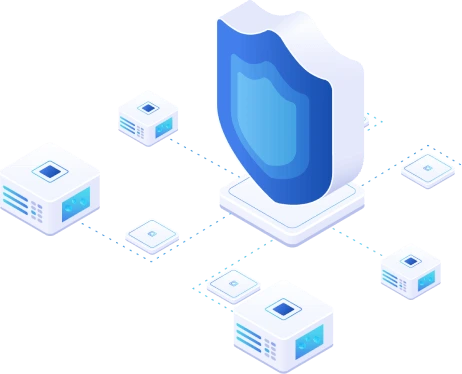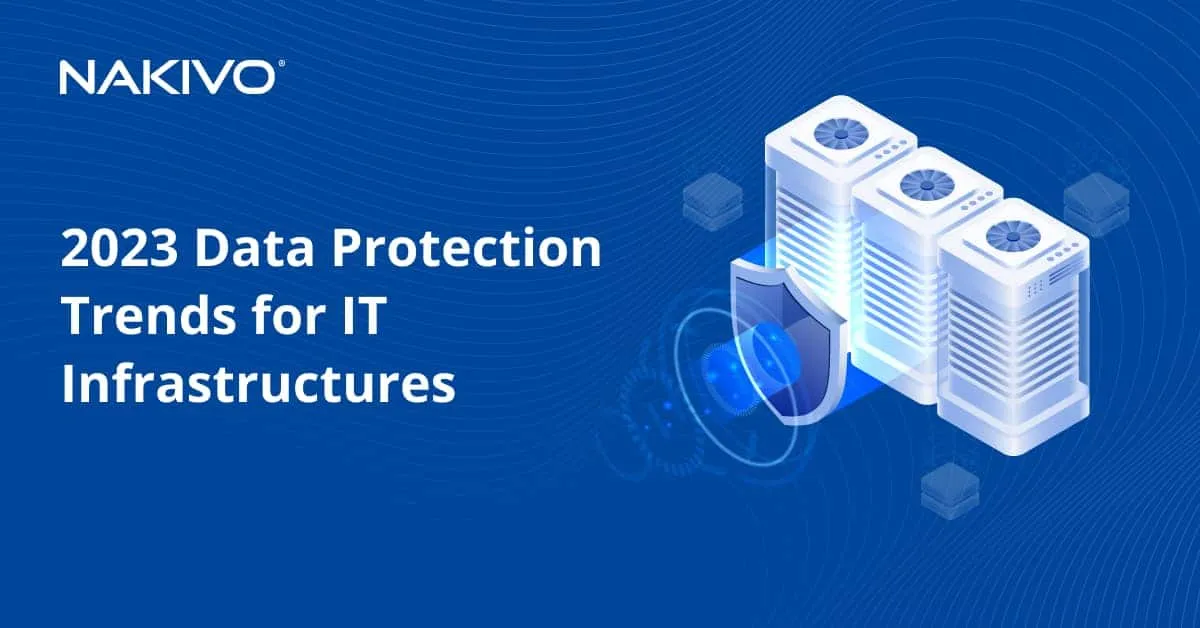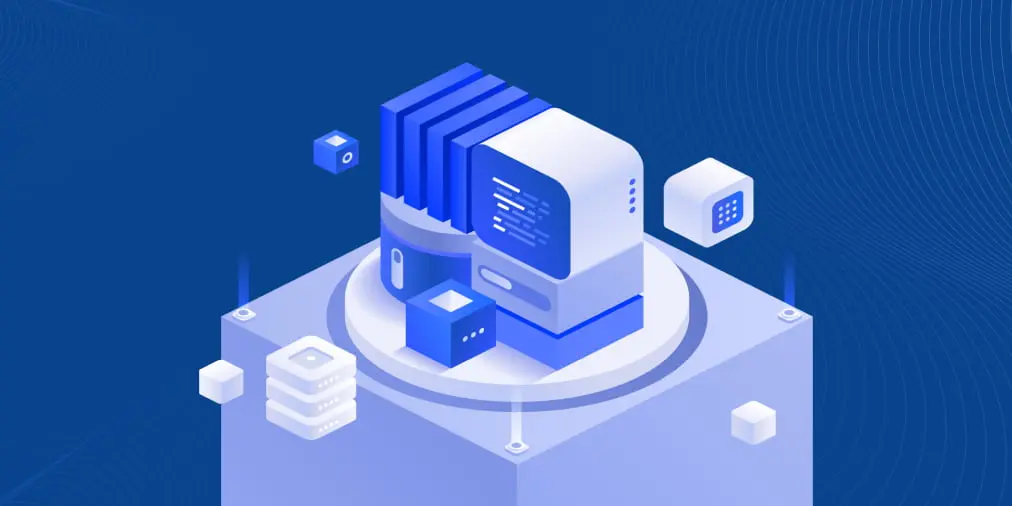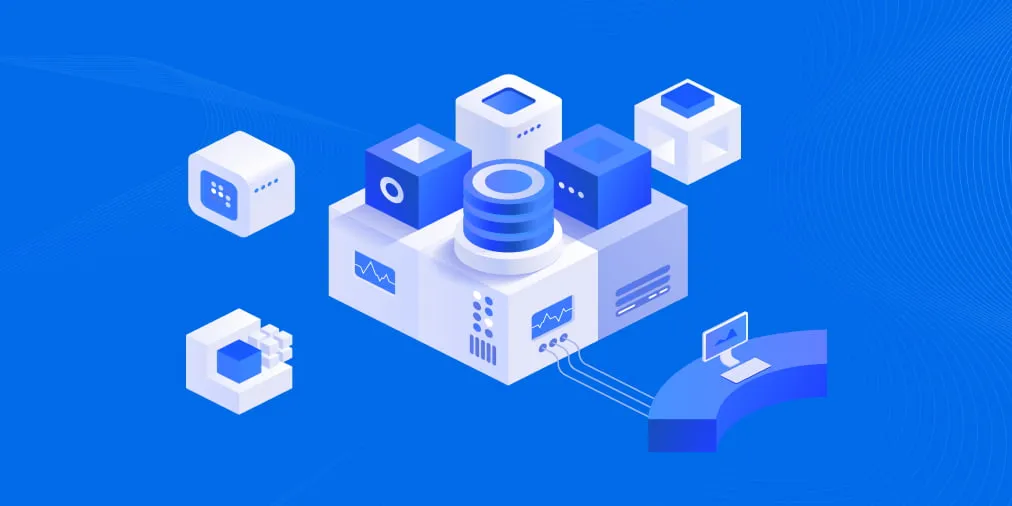2023 Data Protection Trends for IT Infrastructures
Most organizations implement some form of a data protection strategy to ensure operational resilience and disaster recovery. New and evolving challenges put these strategies to the test every year as ransomware grows in sophistication, new formats of data gain prominence, and new platforms are used to generate and store data.
As IT departments try to anticipate new threats and deal with them, we have put together an overview of the major challenges and data protection trends for 2023 and beyond.
5 Top Data Protection Challenges
The relevance of the challenges we describe in this article depends on your organization’s specific industry, IT infrastructure and data structure, and threat landscape. In this section, we divide these challenges into 5 main categories.
Challenge 1: Cybersecurity
Cyber threats are increasingly sophisticated, and cybersecurity stands out as a significant and overarching challenge across all organizations. These threats can potentially undermine operational resilience, with cybercriminals continuously adapting their tactics to bypass security defenses and exploit vulnerabilities. The main cybersecurity areas to consider in 2023 are:
Ransomware. Cybercriminals continue to develop more aggressive strains and improve their methods of delivery to achieve data breaches and raise the stakes. This includes the use of social engineering tactics and targeting backup data, which would otherwise be used for post-ransomware recovery. There are two main ransomware concepts to keep an eye out for this year and beyond:
- Ransomware-as-a-service (RaaS) is a malware distribution model whereby ransomware operators offer their malicious software to other individuals or groups in exchange for a share of the profits. These ransomware strains can target organizations of all sizes, making it crucial to enhance data protection and backup strategies to defend against these evolving threats.
- Ransomcloud refers to malware attacks that target computing and storage resources in the cloud. This has followed the cloud migration trend, and attackers have shifted their focus to cloud computing environments.
These ransomware trends have had a huge impact on the backup and DR solution market. Cloud service providers typically follow a shared responsibility model, where they are responsible for securing the underlying infrastructure, while customers are responsible for protecting their data and applications in the cloud. As a result, cloud backup solutions are now a necessity to protect data. These solutions have also had to adapt and introduce new functionality to combat malware attacks now targeting and attempting to compromise cloud backup systems.
Cloud storage and computing. With the cloud migration trend and the growth of hybrid-cloud environments, organizations are increasingly relying on cloud storage and computing services. While cloud providers typically implement robust security measures for their platforms, misconfigurations, vulnerabilities in third-party applications, and other threats can still lead to unauthorized access, data breaches, and data loss.
Data volume and complexity. As data volumes continue to grow exponentially and infrastructures become more complex, managing and protecting this data across on-premises storage, the edge and the cloud pose a significant challenge.
Data privacy. There is growing demand for data privacy coupled with the regulations governing the collection, storage, and processing of personal data. Complying with data privacy requirements while ensuring effective backup and DR practices involve a more complex approach to backup storage and retention.
Challenge 2: Data governance – managing and retaining data
Data governance is the set of standards an organization implements to ensure the integrity, quality, privacy, and security of data, among other things. These standards cover the processes and technologies used throughout the lifecycle of data. Data governance also affects data protection strategies: how data is protected, where backup data and replicas are stored, and how to manage retention policies.
In recent years, data governance challenges have arisen from the pace of data proliferation as well as the growing volumes and complexity of data. This data is gathered, stored and processed across multiple discrete platforms and locations. Data governance strategists have to overcome a wide range of stumbling blocks, which include:
- Data silos and how to break them up to ensure collaboration and sharing
- How to align data assets from different sources and formats to create meaningful insights and analytics
- The security of data stored online and how to protect it from cyber threats and breaches
- Data privacy concerns as more and more personal data is processed and stored
- Compliance with regulations
Challenge 3: Data silos and edge computing
Data silos are isolated repositories of data that are not easily accessible or shared across different systems or departments within an organization. In the context of the edge computing trend, for example, data silos can emerge due to the distributed nature of edge devices and the decentralized processing of data. Edge computing involves processing, storing, and analyzing data closer to the source or the “edge” of the network, where the data is generated. This reduces the need to transmit all data to centralized cloud and data center environments for processing.
Despite the advantages like reduced latency and bandwidth usage, this decentralized “edge” approach can result in the creation of data silos. This makes it difficult to aggregate and derive comprehensive insights. Organizations have to implement effective data integration and management strategies to overcome these silos and ensure seamless access, analysis, utilization, and protection of data across the edge computing infrastructure.
Challenge 4: Regulatory compliance
Compliance with regulatory requirements for personal and financial data, among other types, remains crucial for data backup in 2023. Governments and regulatory bodies worldwide have enacted stringent data protection regulations to safeguard personal information and mitigate the risks related to data breaches. The latest of these laws was the Virginia Consumer Data Protection Act, which came into effect in January 2023, with other notable laws including the EU’s General Data Protection Regulation (GDPR) and the California Consumer Privacy Act (CCPA) in the United States, and other similar laws in various jurisdictions.
Failure to comply with these requirements can result in legal penalties, reputational damage, and loss of customer trust. Challenges in this context include keeping up with evolving regulations, understanding and implementing complex compliance frameworks, and ensuring data security and privacy while maintaining efficient backup processes.
Challenge 5: Proliferation of hybrid environments
Hybrid environments, which combine on-premises infrastructure with cloud services, present specific challenges related to data protection and backup. These challenges include:
- Complexity of data stored across systems and locations
- Dynamic data that is changing all the time and moving across platforms
- Ensuring security and compliance for data protection activities
Implementing cohesive backup strategies that cover both on-premises and cloud-based data is the main obstacle. Organizations must address complexities associated with the integration of a backup solution across all environments that covers all data sources and formats. Hybrid models can also affect the speed and reliability of recoveries in data loss scenarios.
10 Backup and Data Protection Trends
In the face of emerging challenges and threats to data, backup and data protection trends can help organizations ensure that their efforts are effective and that they are using the latest technologies.
Trend 1: Operational resilience
Operational resilience refers to an organization’s ability to ensure data availability, maintain business continuity, and mitigate the impact of disruptions on the bottom line. It involves implementing backup and disaster recovery plans to ensure minimal downtime (fast data recovery for low RTOs), data accessibility (and low RPOs), and the ability to continue essential business functions even during adverse events. In addition to backup, some of the data protection trends that can help achieve these goals include:
Continuous data protection (CDP) is a data protection method that allows organizations to capture and replicate every change made to their data in real-time or near-real-time, ensuring minimal data loss in the event of an incident. CDP relies on technologies like real-time replication, which involves continuously synchronizing data between primary and secondary systems in real time. It allows for seamless failover and quick recovery in case of system failures or disasters.
CDP offers the following benefits:
- Reduced Recovery Point Objective (RPO) by capturing data changes in real-time or near-real-time. This means organizations can recover data to a point just before the incident occurred, minimizing potential data loss.
- Enhanced data resilience by continuously replicating data to secondary storage or off-site locations. This ensures that even in the event of primary storage failures or disasters, organizations can quickly restore data and resume operations.
Disaster recovery (DR) refers to the processes, policies, and procedures that organizations implement to restore their critical IT infrastructure and data after a disruptive event or disaster. DR automation and orchestration solutions have become crucial for developing streamlined, reliable DR processes. DR generally relies on replication of workloads to a secondary location, where replicas remain on standby until needed for failover.
Trend 2: Cloud-native and multi-cloud protection
Multi-cloud and cloud-native data protection concepts have been gaining momentum in recent years. For example, VMware’s annual global conference is dedicated to everything multi-cloud, including VMware Explore 2023.
- Cloud-native protection focuses on implementing security measures and backup strategies specifically designed for cloud environments by leveraging native technologies. This ensures efficient data protection for cloud workloads.
- Multi-cloud data protection addresses the challenges associated with data distributed across multiple platforms, including public and private clouds. It involves implementing backup and recovery solutions that can seamlessly operate across different cloud environments, allowing organizations to protect and recover their data regardless of the cloud provider or infrastructure they use.
These trends emphasize the importance of adapting data protection strategies to the cloud environment and using the advantages of multiple cloud platforms. They enable organizations to enhance data security, availability, and recoverability in cloud-native and multi-cloud environments.
Trend 3: Hybrid environments and edge computing protection
Protecting hybrid environments and edge infrastructures requires integrated backup solutions that support different data sources across platforms without adding to the complexity of administration. It requires addressing data fragmentation, ensuring secure connectivity, implementing robust security measures, maintaining compliance, and addressing the unique considerations of edge computing. By integrating these aspects, organizations can achieve resilient and secure data protection in hybrid environments with edge computing.
Trend 4: Ransomware protection and mitigation – beyond the 3-2-1 rule
While the 3-2-1 rule involves having three copies of data, stored on two different media, with one copy stored offsite. It remains a fundamental principle in 2023, decades after it was first introduced. However, this rule can be enhanced with new cybersecurity tools and technologies.
- Immutable storage ensures the integrity and security of backup data by preventing any unauthorized modifications or deletions. Once data is written or stored, it becomes unchangeable and cannot be altered or deleted, providing protection against threats such as ransomware attacks. Immutability relies on the write-once-read-many (WORM) technology. By using immutable backup storage, organizations can protect backup data versions from new ransomware infections and provide a reliable source for data recovery in data loss scenarios.
- Other anti-ransomware tools to fight ransomware in 2023 include advanced threat detection systems, behavior-based analytics, endpoint detection and response (EDR) solutions, network segmentation, application whitelisting, user behavior analytics, and security information and event management (SIEM) systems. They also include functionality in data protection solutions that allow you to scan backups for malware before proceeding with recovery and monitoring systems for irregularities.
Trend 5: Regulatory compliance
When it comes to regulatory compliance, data protection trends in 2023 have an increased focus on privacy, enhanced data governance, vendor risk management, and strengthening cybersecurity measures.
Compliance trends require greater attention to:
- Global data transfer mechanisms
- Privacy by design and default
- Data subject rights
- Data breach notifications
- Accountability and documentation
Zero trust architecture is a cybersecurity approach that assumes no implicit trust within a network, requiring authentication and authorization for every access request. It emphasizes continuous verification of users, devices, and applications to enhance security and mitigate the risk of breaches.
Zero Trust Architecture aligns with several key principles and requirements of data protection regulations, such as the GDPR and CCPA, by implementing strong access controls, continuous monitoring, and identity-based authentication.
Trend 6: ML/AI for backup and DR automation
In 2023, machine learning (ML) and AI are proving crucial in automating backup and disaster recovery processes to streamline and enhance data protection operations. Some of the use cases include:
- Backup policy optimization by analyzing data patterns, usage trends, and business requirements to optimize backup policies.
- Intelligent data deduplication and compression by analyzing data patterns to identify duplicate or redundant data and eliminate redundant data blocks, reducing storage requirements and optimizing backup storage utilization.
- Predictive analytics for backup performance by analyzing historical backup performance data, including backup success rates, duration, and resource utilization, to identify patterns and predict potential backup failures or performance bottlenecks.
- Intelligent backup scheduling to optimize backup scheduling based on factors such as workload patterns, system availability, and network bandwidth utilization. Based on analysis, backup operations can be scheduled during low-activity periods or when network resources are less congested, minimizing the impact on production systems.
- Automated disaster recovery orchestration by analyzing system dependencies, application interdependencies, and recovery time objectives (RTOs) to automate the orchestration of disaster recovery processes.
- Intelligent incident detection and response by analyzing backup and disaster recovery logs, system alerts, and other relevant data sources to detect anomalies, identify potential backup failures or data corruption issues, and trigger automated responses.
- Intelligent resource allocation to optimize resource allocation for backup and disaster recovery processes by analyzing resource utilization patterns and workload demands and dynamically allocating storage, compute, and network resources to ensure efficient backup and recovery operations.
Trend 7: Tape proves adapted to new challenges
Tape continues to thrive in 2023 for data protection due to its cost-effectiveness, scalability, longevity, and security. By using tape media as backup storage, you get high-capacity storage, offline data protection to create an air gap, and long-term archiving capabilities, making it the ideal choice for organizations with large data volumes and regulatory compliance requirements.
Tape continues to thrive and remains relevant in terms of data protection for several reasons, including:
- Cost-efficiency for long-term data retention. The cost per terabyte of tape storage is typically lower compared to disk-based storage options.
- High capacity and scalability. Tape technology continues to advance, offering higher storage capacities and improved data transfer rates. Modern tape formats, such as LTO-9 (Linear Tape-Open 9), can provide capacities of up to 45 terabytes per tape cartridge. Moreover, tape libraries can scale up to house hundreds or even thousands of tape cartridges.
- Long-term data preservation. Tapes have a shelf life of 30 years or more when stored in appropriate environmental conditions. This makes them suitable for organizations that need to comply with data retention regulations or retain data for extended periods.
- Offline and air-gapped storage, which helps protect data from cyber threats such as ransomware attacks. By keeping tapes offline in a secure location when not in use, organizations can create an air gap between their production systems and the backup data, reducing the risk of unauthorized access or data loss due to cyberattacks.
- Energy efficiency. Tape storage is energy-efficient compared to disk-based storage. Tapes consume significantly less power when not in use, making them an environmentally-friendly option for long-term data retention.
- Compatibility and interoperability. Tape technology has a history of compatibility and interoperability across different tape drive generations. This ensures that organizations can access and restore data from older tape formats, preserving data integrity and accessibility over time.
Trend 8: Green data storage
Green data storage refers to the adoption of environmentally-friendly practices and technologies in data backup, especially in large datacenters. It involves implementing energy-efficient storage solutions, reducing carbon footprint, and optimizing data center operations to minimize power consumption and environmental impact. Note that this doesn’t mean using hard disk drives of green series produced by vendors primarily for home/individual use.
Some of the concepts around green data storage are:
- Energy efficiency to minimize power consumption and reduce carbon emissions. By using energy-efficient hardware components, optimizing power management, and implementing intelligent cooling systems, organizations can lower their energy consumption and environmental footprint associated with data storage.
- Renewable energy integration, with sources such as wind or solar power, to power data centers and storage infrastructure. By relying on renewable energy, organizations can reduce reliance on fossil fuels and contribute to a greener and more sustainable data storage ecosystem.
- Cloud storage efficiency, with cloud providers optimizing resource utilization, consolidating data storage infrastructure, and using economies of scale to achieve energy efficiency.
- Lifecycle management and disposal practices by employing techniques such as data deduplication, compression, and tiered storage to optimize capacity utilization. Additionally, organizations should follow environmentally-responsible practices when disposing of outdated or decommissioned equipment, ensuring proper recycling or disposal to minimize e-waste.
- Virtualization and consolidation of storage systems into a smaller, more efficient infrastructure to reduce power consumption and physical space requirements, resulting in a smaller carbon footprint.
Trend 9: BaaS and DRaaS – Managed data protection services
Organizations are increasingly resorting to backup as a service (BaaS) and disaster recovery as a service (DRaaS), and other data protection services from MSPs for their flexibility, scalability, cost-efficiency, and reliability. MSPs can help organizations achieve scalable data protection, rapid recovery, and seamless business continuity in the event of disruptions or disasters. This trend continues to evolve in the following aspects:
- Increased adoption of data protection services as a result of the shift towards cloud-based solutions, coupled with the increased awareness of the importance of data protection and business continuity.
- Integration with public cloud providers (like AWS, Google Cloud Platform (GCP), Microsoft Azure) by MSPs to enhance their offerings. These integrations allow organizations to use the infrastructure, scalability, and global reach of public clouds while benefiting from the data protection capabilities offered by MSPs.
- Ransomware protection and mitigation features in BaaS and DRaaS solutions to protect against and mitigate the impact of such attacks. These features include immutable backups, anomaly detection, and rapid recovery capabilities to minimize downtime and data loss in the event of a ransomware incident.
Trend 10: Cloud repatriation
Cloud repatriation refers to the process of bringing back data and workloads from the cloud to an on-premises infrastructure. This trend has gained traction in recent years as organizations realize the need for greater control, security, and compliance over their data. Cloud repatriation enables organizations to strike a balance between the benefits of cloud computing and the need for robust data protection strategies.
Data protection plays a crucial role in this shift. When organizations repatriate data, often only partly, they require a data protection solution that can offer them control and visibility of data wherever it resides. Such a solution should also provide the necessary flexibility and cybersecurity.
NAKIVO Backup & Replication: Pre-Empting Threats and Anticipating Threats
As a backup and DR vendor, NAKIVO continues to lead by adapting its flagship solution to emerging challenges and trends. NAKIVO Backup & Replication is a modern data protection solution that can help SMBs, enterprises and MSPs overcome the latest data protection challenges in multi-cloud and hybrid environments.
The NAKIVO solution offers several benefits in the 2023 threat landscape and data protection trends:
- Integrated support for virtual, cloud, physical and SaaS platforms, that is comprehensive data protection for virtual machines, cloud instances, and physical machines
- Direct backup to public cloud (Amazon S3, Wasabi, Lyve Cloud, Azure Blob, Backblaze B2) and other S3-compatible platforms, including private cloud vendors (Cloudian, MinIO, etc.)
- Ransomware resilience with powerful cybersecurity features: immutability, backup malware scan, and other security features
- Backup to tape for long-term storage and archival of backup data
- Backup data encryption in flight and at rest
- Backup automation with policies
- Replication and disaster recovery orchestration
- Flexible retention settings
- Advanced multi-tenancy and a flexible MSP Console
- Cost-efficiency with the most competitive prices on the market and two licensing models: subscription and perpetual
Make sure to try NAKIVO Backup & Replication in your environment to see for yourself how the solution integrates in different environments and works seamlessly across platforms and data centers.





